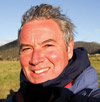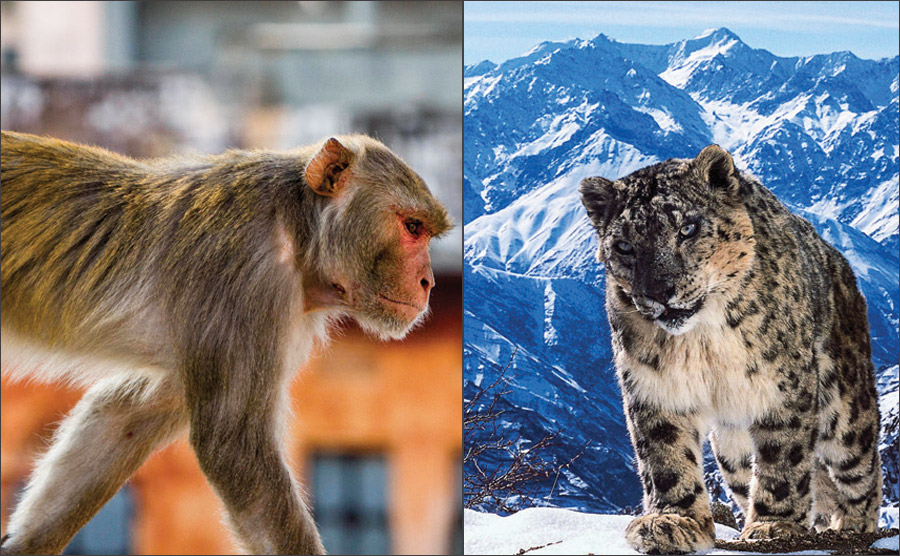 Over the 22 years of Jonny (Jonathan) Keeling’s illustrious career, the craft of wildlife filmmaking and infotainment has changed considerably. Keeling, an award-winning global storyteller and Natural History producer, believes that the art has changed not just because of the cutting-edge technology available today but also because story-telling has become a key element in the way wildlife and nature are filmed and presented. The man behind the Planet Earth II and Deadly Pole to Pole series was hosted in India by Sony BBC Earth earlier this month. Keeling dwells on how the art of wildlife filmmaking has evolved, the upcoming series Seven Worlds and his experience of filming in India.
Over the 22 years of Jonny (Jonathan) Keeling’s illustrious career, the craft of wildlife filmmaking and infotainment has changed considerably. Keeling, an award-winning global storyteller and Natural History producer, believes that the art has changed not just because of the cutting-edge technology available today but also because story-telling has become a key element in the way wildlife and nature are filmed and presented. The man behind the Planet Earth II and Deadly Pole to Pole series was hosted in India by Sony BBC Earth earlier this month. Keeling dwells on how the art of wildlife filmmaking has evolved, the upcoming series Seven Worlds and his experience of filming in India.Q] How has the art of filming wildlife and nature changed since you first started out, 22 years ago?
Technology of course has completely changed the way we shoot and film today. More than anything else, I think the way content is presented has changed. Storytelling has changed. We have become smarter with drama techniques. Our storytelling today is quite rich and that’s found its way into actual programming as well. Earlier while it used to be very informational, now it is also a lot more emotional, while staying factually correct.
Q] Do you think the way viewers consume infotainment has also changed?
Yes, it definitely has. You know, Blue Planet II that released last year in the UK, became the most watched show in the whole of the UK – more than any drama, sports event or entertainment show. We’re also pulling in a very young audience, which means that the storytelling has really helped to engage new, younger audiences.
Q] You have a couple of shows lined up for release here in India. Can you tell us a bit about what Indian viewers can expect in the coming months from Sony BBC Earth?
One of the shows we have coming up is Dynasties, which is a series about five animal families – chimpanzees, tigers in India, lions in Africa, hunting dogs in Africa and penguins in Antarctica. So you can see the way things happen in each animal family – it’s really just like Game of Thrones in the animal kingdom. This is very different from some of our other projects like Blue Planet, because here we’re focusing only on one family of animals at a time.
Q] Tell us a bit about Seven Worlds, the production that you’re currently working on.
In Seven Worlds, while I cannot really give away too much information yet, we have found so many new stories. People will see animals they’ve never seen before, places they’ve never seen, and technology that they will be surprised by. I have worked with wildlife for 30 years and I have a PhD in it, and I’m seeing things that I have never seen before or dreamt of in my entire life.
Q] When is Seven Worlds scheduled to be released?
We plan to release that sometime around the autumn of 2019 in the UK, with the rest of the world soon after.
Q] You’ve done a fair bit of filming in India too. What really stood out for you while shooting in the country?
The food! It’s absolutely amazing! The variety of landscapes here is extraordinary too. For example, in Mumbai you have 20 million people, and you’ve also got the highest concentration of leopards anywhere in the world. And then you go to Ladakh and suddenly you have 5,000 metres of plateaus with 6,000 metres of mountainous terrain. It’s incredible!
Q] What would you want to see differently in the future when it comes to wildlife filmmaking? How do you want to see the art evolve?
It would be great if we could have powerful films that everyone is happy to watch, while also highlighting some of the threats to animals and nature. For example, Blue Planet drew everyone’s attention to the damage caused by plastic, and has changed people’s perceptions both in the UK and around the world. In the future, it would be great to see good filmmaking drive positive change.
























